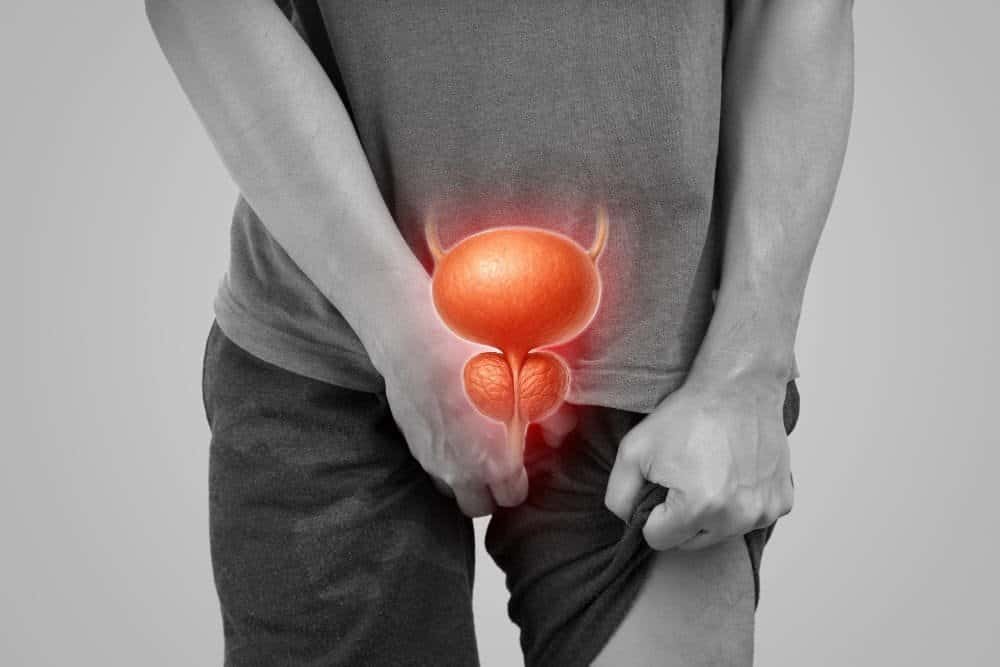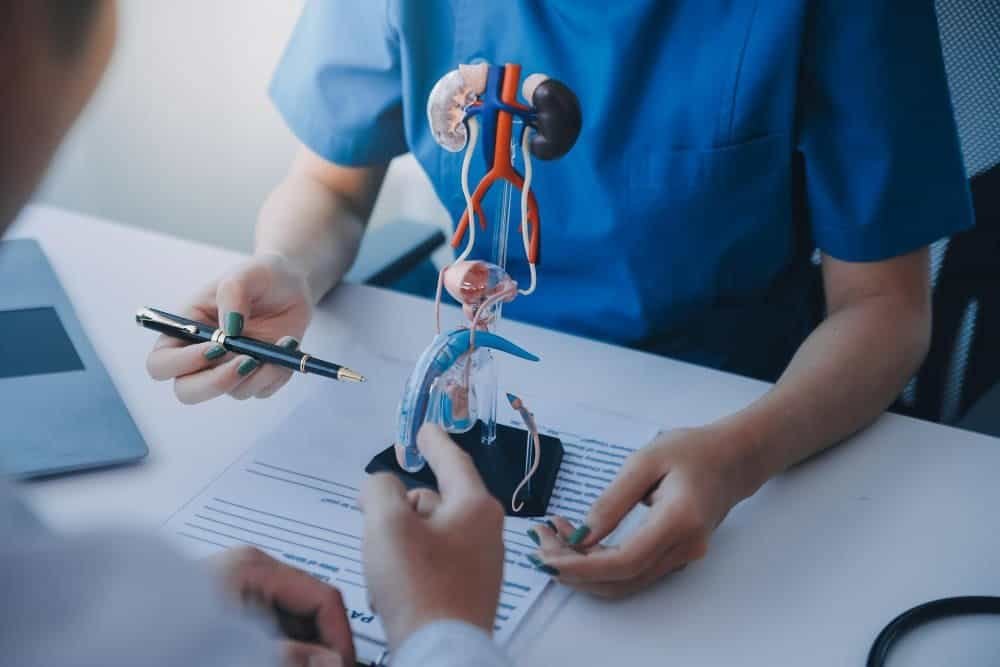Thinking about PAE and wondering about prostatic artery embolization side effects? You’re in the right place. This guide offers a clear, honest look at what you can expect during and after the procedure, helping you make an informed decision about your prostate health. 🤔

What Are the Potential Side Effects of Prostatic Artery Embolization?
Prostatic Artery Embolization (PAE) is a modern, minimally invasive procedure designed to relieve urinary symptoms caused by an enlarged prostate. For many individuals, it’s a life-changing alternative to traditional surgery. However, like any medical procedure, it’s important to have a clear understanding of the potential side effects. The good news is that PAE is known for its high safety profile and low rates of serious adverse events. Most side effects are mild, temporary, and a sign that the treatment is working.
This detailed guide, prepared with the expertise of Dr. Samir Abdel Ghaffar, an interventional radiology consultant, will walk you through everything from the most common experiences to postprocedural care, ensuring you have all the facts.
Understanding Post-Embolization Syndrome (Post-PAE Syndrome)
One of the most discussed topics following the procedure is Post-Embolization Syndrome. This is not a complication but rather an expected response of the body to the embolization process. When the blood supply to parts of the prostate is blocked, the tissue begins to shrink, which can trigger a mild inflammatory reaction. Think of it as your body’s way of starting the healing process.
The symptoms of post-PAE syndrome are usually mild and manageable. They typically appear within the first few days after the procedure and resolve on their own. Common symptoms include:
- Pelvic Pain or Discomfort: A dull ache or feeling of pressure in the pelvic region is common. This is often the most noticeable symptom of the syndrome.
- Mild Fever: A low-grade fever is the body’s natural response to inflammation.
- Nausea and Vomiting: Some patients may experience temporary nausea, though vomiting is less frequent.
- Fatigue: Feeling tired or rundown for a few days is normal as your body focuses its energy on healing.
- Urinary Symptoms: A temporary increase in urinary frequency or a burning sensation during urination can occur.
Most PAE patients who experience this syndrome find that the symptoms peak within the first week and then gradually fade. Over-the-counter pain relievers and anti-inflammatory medications are typically sufficient to manage any discomfort.
PAE’s More Common Side Effects: What to Expect

Beyond Post-Embolization Syndrome, there are other common, temporary side effects that patients might experience. These effects are generally mild and resolve within a short period. Understanding them beforehand can help ease any concerns during your recovery.
Urinary Changes
Since the procedure directly targets the prostate, which surrounds the urethra, temporary changes in urination are very common. These are signs that the prostate is reacting to the treatment.
- Frequent Urination: You might feel the need to go to the bathroom more often for a short time. This is a common effect.
- Painful Urination (Dysuria): A burning sensation or discomfort while urinating can occur. This is usually temporary and resolves as the inflammation subsides.
- Blood in Urine (Hematuria): It’s not uncommon to see a small amount of blood in the urine for a few days post-procedure. This is typically minor.
- Weak Urine Stream: Your urine stream might become temporarily weaker before it starts to improve significantly.
Other Common Effects
- Blood in Semen (Hematospermia): Similar to hematuria, some patients report seeing blood in their semen. This can last for a couple of weeks but is harmless and resolves on its own.
- Puncture Site Discomfort: The PAE procedure involves a tiny incision, usually in the groin or wrist, to access the artery. You may experience some mild pain, bruising, or a small lump (hematoma) at the puncture site. This is minimal and fades quickly.
Less Common Risks and Potential Complications
While PAE boasts low adverse events rates, it is important to be aware of less common risks. Choosing a highly experienced interventional radiologist like Dr. Samir Abdel Ghaffar significantly minimizes these risks. Potential complications can include:
- Urinary Tract Infection (UTI): Any procedure involving the urinary tract carries a small risk of infection. Symptoms include a persistent burning sensation during urination, fever, and cloudy urine. A UTI is easily treated with antibiotics.
- Acute Urinary Retention: In a small number of cases, inflammation may cause a temporary inability to pass urine. This condition might require a temporary catheter to help empty the bladder while the swelling goes down.
- Bladder Spasms or Urethritis: Inflammation of the bladder or urethra can cause discomfort and an urgent need to urinate. These symptoms are manageable with medication.
- Non-Target Embolization: This is a very rare risk where the embolic particles travel to an artery other than the intended prostatic artery. The skill and precision of the interventional radiologist are crucial in preventing this. An expert uses advanced imaging to ensure the particles go exactly where they are needed.
Answering Your Key Questions about PAE
Many men have specific questions when researching treatment options. Here are honest answers to some of the most frequent queries found in prostate artery embolization reviews.
Will Prostate Artery Embolization Cause Erectile Dysfunction?
This is a major concern for many men. Unlike some traditional surgeries for an enlarged prostate, one of the key advantages of PAE is the extremely low risk of sexual side effects. Studies have consistently shown that prostate artery embolization does not negatively impact erectile function. In fact, some patients report an improvement in their sexual function after their urinary symptoms are resolved.
What is the Prostate Artery Embolization Success Rate?
The success rate for PAE is very high. Clinical success is measured by the improvement in a patient’s symptoms. The vast majority of individuals—up to 90%—experience a significant reduction in urinary symptoms like frequent urination, weak stream, and waking up at night to urinate. This leads to a major improvement in quality of life. 👍
How Long Does Prostate Artery Embolization Last?
The positive effects of PAE are long-lasting. Most patients experience sustained symptom relief for many years. While every individual is different, the need for a repeat procedure is uncommon. The durability of the results is one of the reasons PAE has become a preferred treatment for many. ⏳
What is the Prostate Artery Embolization Recovery Time?
Recovery time is another significant advantage of PAE. Since it is a minimal incision procedure, recovery is much faster than with surgery. Most patients go home the same day. You can expect to resume light activities within a few days, and most people are back to their normal routine in about a week.
Who Is Not a Candidate for Prostate Artery Embolization?
PAE is a fantastic option for many, but it’s not suitable for everyone. An experienced doctor will carefully evaluate your health to determine if it’s the right choice. Generally, you may not be a candidate if you have:
- An active urinary tract infection or prostate infection (prostatitis).
- Advanced atherosclerosis (hardening of the arteries) that makes accessing the prostatic artery too difficult.
- A known allergy to the contrast dye used during the imaging process.
- Severe kidney disease.
- Prostate cancer (PAE is for benign prostatic hyperplasia, not cancer).
Postprocedural Care: A Smooth and Comfortable Recovery
Your comfort and safety after the procedure are a top priority. Postprocedural care is focused on managing the mild side effects and ensuring a smooth recovery. Dr. Samir Abdel Ghaffar and his team provide detailed instructions for care at home. This typically includes:
- Medication: You may be prescribed mild pain relievers, anti-inflammatory drugs to manage Post-Embolization Syndrome, and possibly a short course of antibiotics to prevent infection.
- Rest: Taking it easy for the first few days is recommended. Avoid strenuous activity, heavy lifting, and vigorous exercise for about a week.
- Hydration: Drinking plenty of fluids helps flush the urinary system and supports healing.
- Monitoring: You will be advised on what to watch for, such as signs of infection (fever, chills) or difficulty urinating.
- Follow-Up: A follow-up appointment is crucial to monitor your progress and ensure the prostate is responding as expected to the treatment.
Why Choose Dr. Samir Abdel Ghaffar for Your PAE Procedure?
When it comes to a specialized procedure like Prostatic Artery Embolisation, the experience of your doctor matters immensely. Dr. Samir Abdel Ghaffar is a leading consultant in interventional radiology with extensive expertise in minimally invasive treatments for the prostate, including PAE and advanced echolaser techniques.
Choosing an expert ensures:
- Precision and Safety: An experienced hand can navigate the complex network of arteries with precision, dramatically reducing the risks of complications like non-target embolization.
- Optimal Outcomes: Skill and experience are directly linked to higher success rates and more significant symptom relief.
- Comprehensive Care: Dr. Samir provides a complete pathway of care, from initial consultation and determining if you are the right candidate to performing the procedure and managing your postprocedural recovery. 👨⚕️
The reported adverse events for PAE are already low, but in the hands of a specialist, the procedure becomes even safer and more effective.
Your Path to Relief ✅
The side effects of prostatic artery embolization are typically mild, predictable, and temporary. The most common experience, post-PAE syndrome, is simply a sign that your body is healing. Compared to the risks and lengthy recovery of traditional surgery, PAE stands out as a superior, patient-friendly option for relieving the frustrating symptoms of an enlarged prostate.
If you are tired of letting urinary problems control your life, it’s time to explore a modern solution. A consultation with an expert like Dr. Samir Abdel Ghaffar can provide you with a personalized assessment and answer all your remaining questions.
 العربية
العربية 

